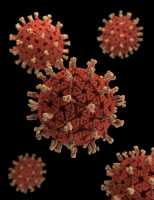Author Interviews, Cancer Research, CDC, JAMA, Lung Cancer / 10.12.2020
More Lung Cancer in Women Non-Smokers Than Men, But Most Lung Cancer Still in Smokers
MedicalResearch.com Interview with:
David A. Siegel, MD, MPH
Division of Cancer Prevention and Control
US Centers for Disease Control and Prevention
Atlanta, Georgia
MedicalResearch.com: Why is it important to better understand the smoking histories (both current/former and never smokers) among lung cancer patients?
Response: Knowledge of smoking status of patients diagnosed with lung cancer can help us understand how to best prevent, detect, and treat lung cancer in the future.
More than 84% of women and 90% of men newly diagnosed with lung cancer had ever smoked cigarettes, and half of patients aged 20 to 64 years newly diagnosed with lung cancer were current cigarette smokers. These findings reinforce the importance of cigarette cessation and lung cancer screening.
1 out of every 8 people diagnosed with lung cancer had never smoked cigarettes, which reiterates the importance of learning more about their risk factors for lung cancer, which could impact prevention and treatment. (more…)





























